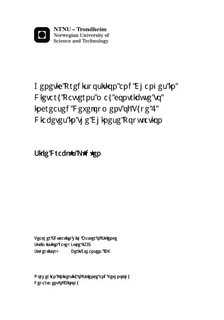| dc.description.abstract | Lifestyle diseases, such as type 2 diabetes (T2D) and cardiovascular diseases (CVDs), arerelated to overweight in the western world. Although lower occurrence of overweight hasbeen documented in China compared to western countries, an increase in such lifestylediseases has been observed during the last decades. The aim of this thesis was to study therelationship between lifestyle and the development of T2D and CVDs in the Chinesepopulation. The results may provide further knowledge concerning lifestyle diseases and maytherefore contribute to reduce disease development in the future. The experimental datapresented in this thesis was extracted from various research areas within molecular biology,genetics and epidemiology.Asian populations show higher concentrations of the pro-inflammatory mediator PAI-1 andlower concentrations of the anti-inflammatory mediator adiponectin compared to other ethnicgroups. These differences suggest that Asians may be genetically predisposed to developingmetabolic inflammation, which may increase the risk of developing T2D and CVDs. In China,the inflammation is most likely amplified due to altered nutritional patterns. Urbanpopulations in China have increased rapidly during the last decades. Highly influenced bywesternization processes, dietary changes have been introduced to these urban areas. Westerndiets include high consumption of fat, resulting in high kilocalorie (kcal) intake that mighttrigger overnutrition. Furthermore, an altered dietary carbohydrate composition has beenobserved through increased consumption of high glycemic indexed (GI) carbohydrates. Thetraditionally northern Chinese diet contains more kcal than the southern diet and has a higherGI content. These dietary differences might provide an explanation for higher prevalence ofT2D and CVDs observed in north China compared to south China.Genetic changes in utero and during childhood due to the Chinese Famine in the mid1940shas proven to explain a small part of the increased development of T2D in China. Individualswho during early development were subjected to malnutrition and later consume a richwestern diet are at increased risk of developing T2D. However, these genetic differences donot explain the disease development in Chinese children and adolescents. The one-childpolicy has been blamed for the increase as it reduces competition between siblings. None ofthe results in this thesis support the hypothesis that the one-child family policy is to be blamedfor the disease development. Therefore, the main factors contributing to the lifestyle diseasedevelopment in China appear to be genetic predisposition and dietary changes. | nb_NO |

